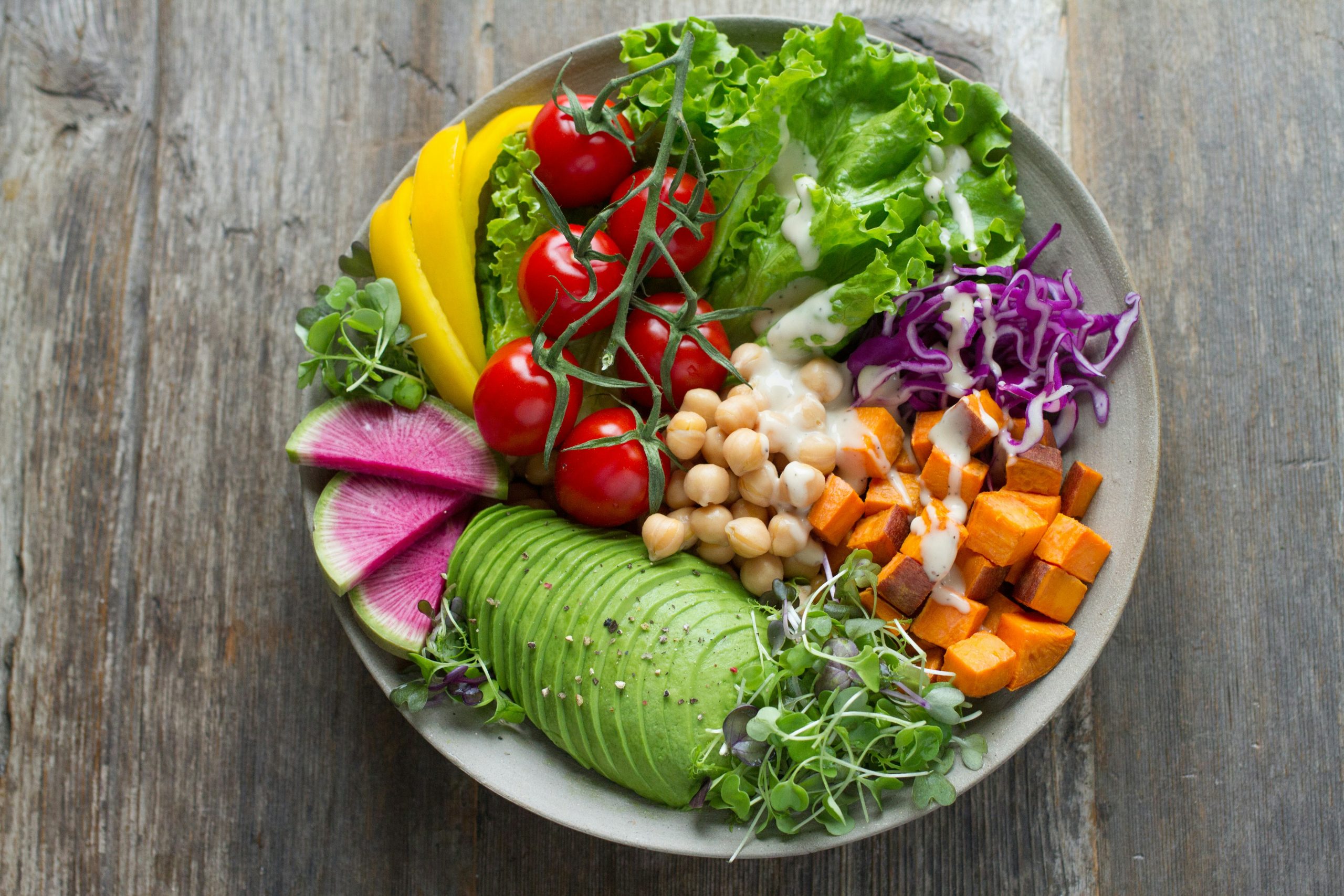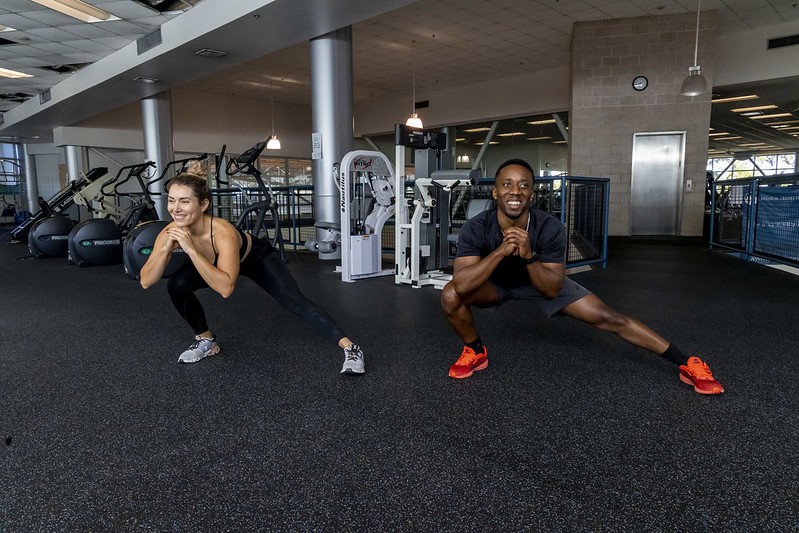iii. Managing Your Physical Health

Photo by Anna Pelzer on Unsplash
Healthy Eating
“Healthy eating is a way of life, so it’s important to establish routines that are simple, realistic, and ultimately livable.” – Horace
While it’s not the only thing that contributes to great health, what you eat makes a huge difference. We have 37 trillion cells in our bodies. The only way they function optimally is with good nutrition. As a college student, you may be tempted to stop for fast food on your way to school or work. The downside of fast food is that it is often loaded with sugar, salt, or both. In addition, it is often low in essential vitamins, minerals, and fiber.
Since 2017, the Privateer Pantry has provided supplemental food support to all currently enrolled UNO students. The Pantry offer a selection of shelf-stable food and personal care items as well as recipes. They are located in the Office of Student Affairs, University Center Room 248. Find out more by visiting The Privateer Pantry’s website.
Additionally, Second Harvest Food Bank offers support for applying for benefits like:
- Supplemental Nutrition Assistance Program (SNAP, formerly Food Stamps)
- FITAP (Family Independence Temporary Assistance, formerly TANF)
- KCSP – Kinship Care Subsidy Program
- Women, Infants, and Children (WIC) referrals
- Louisiana Workforce Registration
- Emergency Food Assistance
- Prescription Discount Cards
For more information about their client services, please email clientservices@no-hunger.org.
Healthy Eating Plate
Nutritionists at Harvard University created The Healthy Eating Plate, which is based on what they consider to be the best available science. Half the plate is vegetables and fruit. Aim for eight servings of veggies or fruits a day, more veggies than fruits. The plate also includes whole grains, healthy protein, healthy plant oils, and water.

Figure: Copyright © 2011, Harvard University. For more information about The Healthy Eating Plate, please see The Nutrition Source, Department of Nutrition, Harvard T.H. Chan School of Public Health, www.thenutritionsource.org, and Harvard Health Publications, www.health.harvard.edu.
Healthy eating also includes choosing organic fruits and vegetables when possible. By choosing organic, you help lower the number of toxins your body encounters (since conventional fruits and vegetables are often sprayed with pesticides). When shopping for groceries, the Dirty Dozen List provided by the Environmental Working Group (EWG) is a good guide on which produce is most important to eat organic, as these are the fruits and vegetables with the most pesticide residue. The EWG also compiles a Clean 15 list of the vegetables and fruits with the least amount of pesticides.
Exercise and Physical Fitness
Exercise is good for both body and mind. Indeed, physical activity is almost essential for good health and student success.
The physical benefits of regular exercise include the following:
- Improved fitness for the whole body, not just the muscles
- Greater cardiovascular fitness and reduced disease risk
- Increased physical endurance
- Stronger immune system, providing more resistance to disease
- Lower cholesterol levels, reducing the risks of cardiovascular disease
- Lowered risk of developing diabetes
- Weight maintenance or loss
- Lowering the risk of premature death
- Slowing or reversing the decline of muscle mass, bone density, and strength with aging
- Reducing the stiffness and loss of balance that can accompany aging
- Lowering the risk of developing type 2 diabetes
- Increasing sensitivity to insulin for individuals with type 1 or type 2 diabetes
Perhaps more important to students are the mental and psychological benefits:
- Stress reduction
- Improved mood, with less anxiety and depression
- Improved cognitive functioning and ability to focus mentally
- Better sleep
- Feeling better about oneself
For all of these reasons, it’s important for college students to regularly exercise or engage in physical activity. Like good nutrition and getting enough sleep, exercise is a key habit that contributes to overall wellness that promotes college success.

Photo by University of New Orleans
What Type and How Much Exercise to Do
Physical fitness is a state of well-being that gives you sufficient energy to perform daily physical activities without getting overly tired or winded. It also means being in good enough shape to handle unexpected emergencies involving physical demands—that is, if someone said, “Run for your life!” or you had to rush over and prevent a child from falling, you’d be able to do it. There are many forms of exercise—dancing, rock climbing, walking, jogging, yoga, bike riding, you name it—that can help you become physically fit. The major types are described below.
- Aerobic exercise increases your heart rate, works your muscles, and raises your breathing rate. For most people, it’s best to aim for at least 150 minutes per week of low-intensity activities such as walking, or at least 75 minutes per week of high-intensity activities such as running, spread out throughout the week (Office of Disease Prevention, 2021). If you haven’t been very active recently, you can start with five or ten minutes a day and work up to more time each week. Or, split up your activity for the day: try a brisk ten-minute walk after each meal.
- Strength training helps build strong bones and muscles and makes everyday chores like carrying heavy backpacks or grocery bags easier. Do muscle-strengthening activities of moderate or greater intensity that involve all major muscle groups on 2 or more days a week. (Office of Disease Prevention, 2021) When you have more muscle mass, you burn more calories, even at rest. You could join a strength training class or lift weights at home.
- Flexibility exercises, also called stretching, help keep your joints flexible and reduce your risk of injury during other activities. A good time for flexibility exercise is after cardio or strength exercise when your muscles are warm. Do stretching at least 2-3 times a week. You’ll get even more benefits by stretching daily. Hold each stretch for 10-30 seconds, and repeat for a total of 60 seconds for each major muscle group. Check to see if your college offers yoga, stretching, and/or Pilates classes, and give one a try (Garber, et al, 2011).
In addition to formal exercise, there are many opportunities to be active throughout the day. Being active helps burn calories. The more you move around, the more energy you will have. You can increase your activity level by walking or bicycling instead of driving when possible, taking the stairs instead of the elevator, doing some house or yard work every day, or by parking a little farther from your destination.
The University Recreation and Fitness Center is free for all students during the academic term. Check out the video below for more information about the Rec at UNO!

